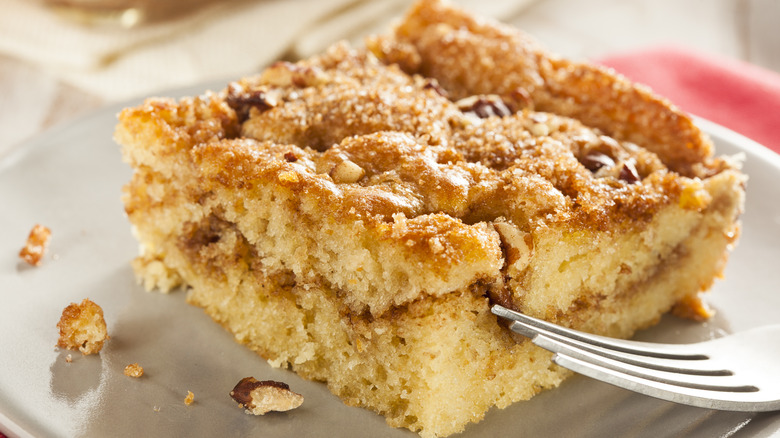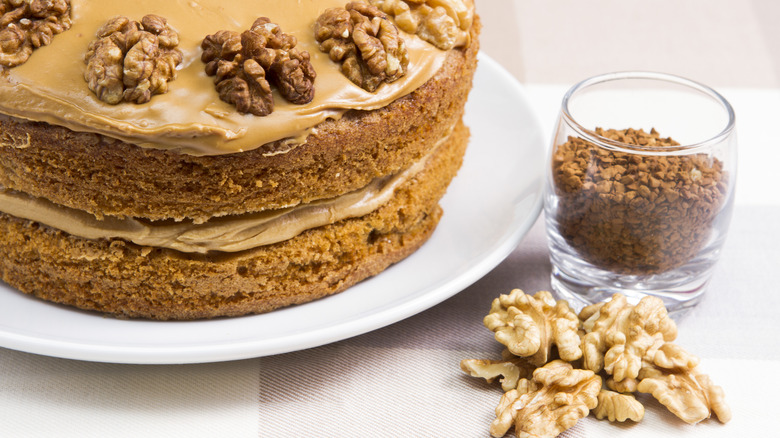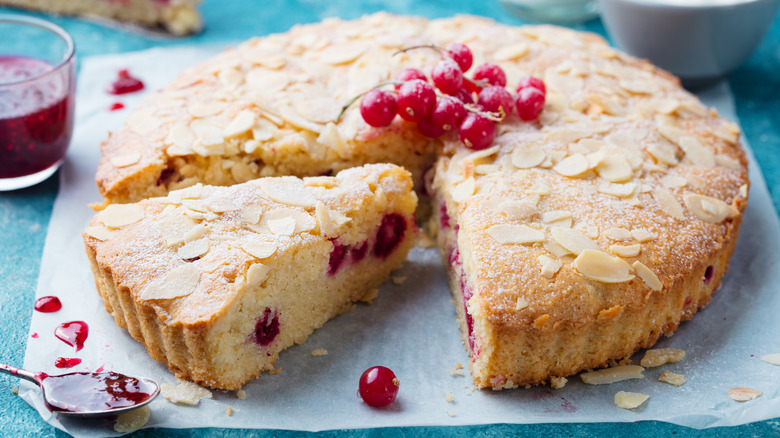British Coffee Cake Is Actually Sweeter Than The American Version
When it comes to culinary pairings, you truly can't beat coffee and pastries. There's something so indulgent about combining the bold, rich flavors of coffee with sweets like donuts and muffins. Then there's coffee cake, which might be the most perfect match for a morning cup of joe. It's believed that the recipe originated in 17th-century Europe, where it probably coincided with the introduction of coffee in countries like Germany and the Netherlands. And as European immigrants made their way to America during the ensuing years, they also brought along various coffee cake recipes.
These days, American coffee cake is known for its bread-like texture, streusel topping, and cinnamon flavors. There are also lots of variations when it comes to ingredients. Some versions feature fruit filling, while others contain nuts for a bit of texture. Some recipes even include cream cheese icing, which adds some decadence to this otherwise buttoned-down pastry. However, the American version of coffee cake pales in comparison to the indulgence factor of the British recipe.
Putting the coffee back into coffee cake
Despite what the name suggests, American versions of coffee cake rarely include coffee flavoring these days. This is not the case with British coffee cake, which is far more similar to a traditional cake as compared to the recipe that's so beloved in America. Often referred to as coffee and walnut cake, this baked good features coffee flavoring both in the cake itself, as well as the buttercream icing used to adorn it. As for the walnuts, these are often liberally applied to the top of the cake to ensure the perfect amount of crunch.
As for who invented British coffee cake, that remains somewhat of a mystery. However, the recipe was first mentioned in a self-raising flour advertisement in 1934, which was a common practice during that era. The dessert remains a beloved part of British culinary culture to this day, even appearing on the baking competition show "The Great British Bake Off". Accordingly, it joins the pantheon of delectable British desserts that most Americans are sadly unaware of.
More classic baked goods from the UK
Even bona fide anglophiles may be surprised by the wide variety of classic desserts popular throughout the U.K. In Scotland, Dundee cake is a variation of the classic fruitcake recipe that features sultanas (a type of dried seedless white grape/cherries, and almonds. The cake also includes candied citrus peels, which makes sense when you consider it was conceived by a marmalade manufacturer looking to expand its offerings.
A wintertime treat used to herald Guy Fawkes Night, parkin is a curious dessert originating in the northern part of England. This treat consists of black treacle (commonly known as molasses in the U.S., as well as flour, oatmeal, and some form of fat, such as butter). The treacle tends to give parkin a difficult texture, which is why bakers must seal it in an airtight container to soften it up after baking. Of course, there are plenty of other tasty British desserts that may take American taste buds by surprise. From Bakewell tarts to Christmas pudding, there really is something for every taste and preference.


